5. Steps for Implementing Change
Steps for Implementing Change
It can be tempting to implement isolated “quick fix” changes such as replacing “foreman” with “team lead” or adding washroom facilities for women. These are important changes, but if they are introduced alone, they bring a risk of creating backlash or cynicism. Rather, they should be accompanied by wider changes to foster more inclusive day-to-day behaviour.
It can be challenging to introduce initiatives with a goal of shifting the day-to-day behaviours in a workplace culture. A systematic use of good change management practices will provide a roadmap to making “change that sticks” – sustainable progress toward a more gender-inclusive workplace. A planned and systematic approach to this change can be summarized into three phases:
Phase 1
Creating the Strategy
Define the gender inclusion objective, scope and strategy – what will be the focus, who will be affected and when.
Confirm the active support of one or more champion(s) – who will take ownership and demonstrate the company’s commitment.
Phase 2
Implementing the Strategy
Rally together a team of supporting change agents – who will make it happen.
Support the implementation of new practices – through communication, cascaded sponsorship, coaching/training, and addressing resistance.
Document the action plan – a clear set of steps, checkpoints and accountabilities.
Phase 3
Reinforcing the Strategy
Measure ongoing progress toward meaningful targets – and respond with corrective actions when needed and celebrations of successes when merited.
Phase 1
Creating the Strategy
Effective change efforts start with a clear focus and solid preparation – making sure that there is the commitment and the readiness to undertake the change.

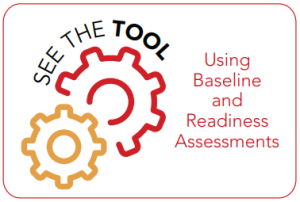
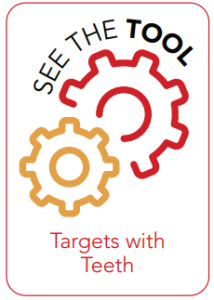
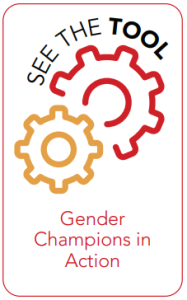
Defining the Strategy and Scope
For a worksite or a company, the focus of a gender inclusion strategy will reflect the organization’s stage on the Inclusion Growth Curve as well as its specific business case. If your organization is early in the journey toward gender inclusion and wants primarily to reduce turnover, then a focus on creating a respectful workplace might be most appropriate. If your company already has some basics in place and wants to leverage the innovation that comes from a more diverse population of senior technical professionals, then a focus on career opportunities or inclusive meeting behaviours might be a better fit.
For industry stakeholders such as associations or educational bodies, a strategy at any point in time must be carefully selected so that it does not “get out ahead” of the reality of relevant employers. For example, a trades school that encourages young women to pursue jobs in local mining sites where the workplace culture is not welcoming can create unmet expectations, turnover and resistance in the workplace and a “chilling effect” among women career seekers that will make it more difficult to attract new applicants. Matching the recruitment strategy with a site-specific approach to creating an inclusive environment is more likely to be successful. In a similar fashion, industry stakeholders can partner with individual employers on specific objectives, with intent to generate success stories to be leveraged more widely.
The strategy that is developed might be one that encompasses the industry, an entire organization, or it might be specific to one division or occupation, or one policy or a particular aspect of a workplace culture. There is no one solution that fits all situations. The one common element is that new, more inclusive practices must be embedded in a workplace culture of gender inclusion.
The evidence is in – organizational culture matters. Organizational culture matters – in a recent multinational survey, 86% of senior executive respondents said that their organization’s culture is critical to business success (Katzenbach Center, Strategy&, 2013).
The past thirty years of research with organizations shows that various strategies can be used for shifting an organization’s culture. For example, to achieve a culture that supports greater gender diversity, companies can start with a wide focus such as fostering a respectful workplace, or a narrower one such as increased hiring of women as Heavy Equipment Operators. The importance of having a critical mass of women suggests it can be best to focus efforts first on achieving meaningful representation, approaching 30%, in targeted areas. Another successful approach is to focus on “small wins” – “a series of controllable opportunities of modest size that produce visible results” by building a pattern that attracts allies and minimizes resistance.” (Weick, 1984). Years of applied research in a range of organizations has shown that a disciplined small-wins strategy for gender inclusion “benefits not just women but also men and the organization as a whole.” (Meyerson & Fletcher, 2000).
Whatever the approach, take a long-term perspective on the challenge of culture change, rather than settle for a “quick fix”. Prepare your organization for a marathon rather than a sprint on the issue. Knowing the current state of your organization will help to surface the opportunities and the likely challenges in becoming more inclusive of women. Many indicators of the current state might be readily available already – hiring, promotion and turnover rates; records of complaints or grievances; employee survey results; absenteeism and wellness indices; and others. Additional indicators of the workplace culture can be gathered through interviews or observations – expectations about work-life balance; interactions in meetings; respectful behaviours; etc.
These assessments will identify natural strengths, areas of weakness, and opportunities for achieving tangible business benefits and early wins. This information will help to shape an appropriate strategy with good likelihood of success.
The evidence is in – targets make a difference. McKinsey’s three-year follow-up of 118 companies and 30,000 employees found that companies with gender targets made the most progress in women’s representation at entry levels – those without targets lost ground (McKinsey & Company and LeanIn.Org, 2015). “Targets with teeth” are specific, challenging, aligned with the company’s strategy for gender diversity, and cascaded to the same levels as business targets for budgets and performance.
Targets should not be focused on numerical goals for the numbers of women in the workplace; goals that are perceived as “quotas” will create unnecessary concerns and risk a narrow, short-term focus. Targets can and should include measures of “new ways of working together” – such as more respectful interactions, inclusive meeting practices or flexibility in where and when some of the work gets done. Targets can also assess indicators that are positive for everyone – less absenteeism, reduced turnover, greater satisfaction measures on employee surveys. Numbers are just one of many possible indicators of progress.
Confirming One or More Champions
The evidence is in – commitment is not optional. Years of focus on gender diversity across many industries have yielded one overwhelmingly consistent conclusion: the commitment of the most senior leader (such as the CEO, Mine Manager, association president, faculty dean) is the critical ingredient. For example, a Conference Board of Canada research study highlighted the difference between “passive” and “proactive” CEO support for gender diversity. And only “proactive” support was sufficient (Orser, 2001).
The CEO alone cannot change the culture of the entire organization – the executive team, the HR function, Diversity and Inclusion champions, and leaders throughout the company must also play their part. A recent McKinsey report concludes that in companies that succeed with fostering gender-inclusive cultures and workplaces, the CEOs and senior executives “walk, talk, run, and shout about gender diversity”. They “fervently believe in the business benefits of creating an environment where talent can rise.” (Barsh, Nudelman, & Yee, 2013).
Champions show their commitment through constant communication and very visible actions. They ask questions, tell stories and challenge assumptions. They get personally involved in key initiatives and they consistently model inclusive behaviours. As an example of how stakeholders can support the industry with collaborative efforts, MiHR has established a Gender Champions Taskforce and piloted a two-part Being a Gender Champion executive session. This in-person workshop provides senior leaders in Canada’s mining and minerals sector with the inspiration, knowledge and skills for succeeding as a Gender Champion and for driving organizational change towards a more gender-inclusive workplace.
Insights from the Mining Industry
“It’s easy to put all the PR stuff on the website but it’s pointless without active support. We need to get senior people to create goals to promote more women coming in and advancing.”
“It doesn’t help to start initiatives at mid-management – the CEO has to say it’s important to the company and make it measurable.”
“Our CEO talks about a flexible workplace and culture, practices this herself and encourages our employees to do the same”
Phase 2
Implementing the Strategy
In most of today’s mining companies, the barriers to women’s participation and advancement are subtle, systemic and mostly unintended. Successful change requires everyone’s persistence to remove these barriers through revised policies, new practices and different ways of working together. A team of change agents, a multi-pronged set of influencing tactics and a clear action plan will help embed change.
Creating a Working Team
An influential senior Champion can work closely with the CEO or Mine Manager to lead the effort. Depending on the selected strategy and the changes to be introduced, a number of people will likely be involved in the implementation. At a minimum, they will be important communication links to connect the gender inclusion effort with the rest of the business. Whether within a worksite, a company or an industry partner such as an association or training institution, these “change agents” will be effective if they have:
- Commitment to gender inclusion.
- Knowledge of the business realities.
- Credibility and positive reputation.
- Strong communication skills.
- Interpersonal skills for teamwork, collaboration and influence.
- Relevant experience with organizational change.
To demonstrate the principles of diversity and inclusion, the implementation process should include people with a variety of backgrounds. Fresh insights will come from a blend of operations and administrative functions; women and men; new hires and long-term employees; parents and single people; and people of different generations and cultures. People with new perspectives will be able to challenge the status quo and question myths and misconceptions about women and men in the workplace.
It will be important to equip the team members with knowledge and skills related to gender inclusion as well as an orientation to challenges of culture change. This Action Plan and the associated tools will be helpful; additional resources customized to mining are also available through the MiHR GEM Works Toolbox.
Connecting to influence behaviour and embed change.
Four interrelated tactics will help to “spread the word” about gender inclusion. They should be solidly founded on the business case and the baseline assessment and designed to help build awareness and gain commitment:
- communications
- cascaded leadership
- training and coaching
- resistance management
Communication will start to build awareness about gender inclusion, why a change is needed and how employees and the company will benefit. Communication builds commitment to the change by engaging key influencers (industry stakeholders, senior leaders, direct supervisors and opinion leaders), and by providing an opportunity for dialogue to address myths and misconceptions. As change starts to take hold and benefits are achieved, the communication activities also provide a vehicle to publicly celebrate successes.
The business case will be a core aspect of the content of communication vehicles – specific to the mining industry, a company or a worksite and directly relevant to the day-to-day concerns of the audience. A focus on disclosure requirements or more effective board governance practices will be of interest to a senior executive audience. A focus on improvements in turnover, safety and equipment maintenance will be more relevant to an audience of operations supervisors. Information about job prospects for women in skilled trades can be of interest to community-based women’s organizations.
A solid communication plan will outline a number of parallel approaches to informing people about the changes. Use face-to-face communications opportunities to address common questions or concerns such as:
- Does a focus on women mean that men will be disadvantaged?
- Won’t this issue resolve itself over time, as more women enter occupations such as skilled trades and scientific or technical professions?
- Will these new policies and programs cost more?
- What does a more “inclusive” workplace look like? How will I be expected to behave?

Cascaded Leadership translates the commitment of senior Gender Champions and the high-level objectives and plans into day-to-day interactions and decisions that will encourage greater participation of women. Throughout a worksite, company or industry employees look to their immediate managers to see whether an initiative is going to take hold and be sustained.
The evidence is in – actions count. In companies attempting to make a major transformation, leaders who “walk the talk” make the difference. In a large-scale McKinsey study, when leaders role-modeled the behaviour changes they were asking the employees to make, the transformation was more than five times more likely to be successful. The rate of success jumped from 6% to 32% (McKinsey, 2015).
In some cases, leaders will not be ready to be the champions one might hope for. Some will lack interest. Some will have questions or concerns. Others might be passive in their support, unwilling to invest or persevere in the face of obstacles. Sustainable change to a more gender-inclusive workplace will be slow and difficult in this context. An intentional effort to influence them could include education about the business case, relevant success stories, one-on-one coaching, or mentoring.
Rio Tinto’s Global Diversity and Inclusion Council is chaired by Harry Kenyon-Slaney, Chief Executive, Energy. The Council represents Rio Tinto’s five product groups and is supported by a growing network of “champions” across all functions and five continents. The Council members are a handpicked group drawn mostly from senior operational roles where they have the breadth to have an impact. Harry emphasizes the importance of cascading new thinking throughout the organization: “It comes down to thousands of small decisions made every day.”
Training and Coaching will help employees, managers and industry stakeholders to see and remove common unintended barriers such as blind spots, unconscious bias, micro-inequities and avoidance of difficult conversations. It is also an important opportunity to reinforce and discuss the business case and address myths and misconceptions.
Fortunately, there is no need to “reinvent the wheel”. There are many good resources available, ranging from online resources to short targeted modules, to comprehensive diversity and inclusion learning programs. For example, MiHR has created a list of resource materials as well as a four-part e-learning series customized to the industry10, for understanding and addressing systemic gender barriers in policies and procedures .
Educating and skill-building does not have to take place in a classroom-based training session. A supervisor, colleagues and industry stakeholders can all be powerful coaches to support individual employees in accepting new approaches and demonstrating new behaviours. For gender inclusion this will likely include:
- Self-awareness: encouraging employees to reflect on their own values, assumptions and behaviours.
- Bias-awareness: providing feedback to illuminate “blind spots” that lead to decisions and actions that have a negative impact on women.
- Having the tough conversations: being willing to discuss controversial views and address inappropriate behaviours.
- Role modeling: being diligent about modeling behaviours and decisions that are intentionally inclusive of women, and encouraging respected employees and opinion leaders to do the same.
- Reinforcing: recognizing employees who demonstrate inclusive behaviours.
10 At the time of writing, the e-learning series was in a pilot phase, with a targeted release in 2017
Rio Tinto offers training to all employees in understanding the “unconscious biases” that we all have. Employees can take a course that looks at how to check and challenge our own behaviour, to create an inclusive workplace culture where everyone can thrive. The course is one of the highest rated and most accessed e-learning courses offered at Rio Tinto.
Resistance Management is an explicit focus on addressing concerns and gradually building acceptance and commitment. Resistance to change of any kind is a natural human reaction because change can introduce uncertainty and discomfort. Taking action to change the gender diversity in mining will also be met with some resistance; however, the majority of it can be overcome if managed correctly.
What will help to address concerns? Some of the most successful tactics are:
- Listening and understanding objections – being heard is critical. Listening can also provide managers with an opportunity to clear any misunderstandings by addressing some common myths and misconceptions.
- Involving people and inviting ideas – allowing employees to take ownership and insert their own ideas of supporting the change.
- Convert the strongest dissenters – by zeroing in on the individual(s) that are the most vocal with their dissent and turning them around on why an increase in gender diversity is needed, these individuals will become allies and likely become equally vocal in support of the initiative.
For different groups within the organization, there are also tactics that have proven successful, such as:
- Executives – Building an emotional connection to the fairness of providing meaningful opportunities to women; and building a logical connection to the benefits of the business case and the expectations of stakeholders.
- Mid-level managers – Helping them to integrate their responsibilities for driving a gender-inclusive culture change along with their existing responsibilities; supporting them in implementing the new practices and programs; reassuring them that the end result will be a more effective workplace.
- Employees – Clearly describing expectations for behaviour in a modern workplace that is inclusive of women; understanding and addressing their concerns; providing training and coaching so that they can be successful with new approaches; reassuring them that new policies and programs will have a wide benefit for the entire workforce.
Within any organization there will be “early adopters” of gender inclusion and there will be laggards. Early adopters can provide valuable evidence of the benefits of change. Solicit examples of their experience and use these as success stories to generate more momentum for change. The key group in the organization to target will be those who are neutral or wavering regarding the need for the change versus those few people who are directly or indirectly sabotaging the idea of making changes to the gender balance.
Documenting the Action Plan
Implementing culture change toward greater gender inclusion is anything but “soft” – it benefits from the same rigour and commitment that a worksite, a company or an industry stakeholder applies to any other business initiative. An action plan will be useful in clarifying expectations and confirming agreements regarding aspects such as the following:
- Clear set of steps – what is the best sequence, which organizational events should be considered in the timelines, what investments and effort will be required, what is the purpose and the intended outcome in line with the strategy.
- Checkpoints – when and how will progress be checked (see also below), what risks need to be on the radar and what are the mitigation plans, how do the progress checkpoints help to inform the next steps.
- Accountabilities – who is responsible for each action, what is the decision making process and whose approval will be required and when, how will the change agents and the champions work together, who will assume responsibility for monitoring the implementation and the execution of the action plan.
Phase 3
Reinforcing the Strategy
Once a new practice, policy or set of behavioural standards has been introduced, it is important to follow up on implementation and impact. This will help to ensure the change is adopted and sustained, while reinforcing the message that gender inclusion is a business issue that matters.
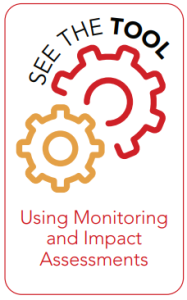
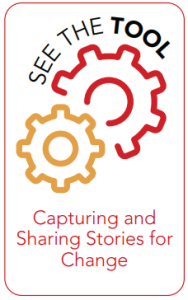
Many methods are available to track results:
- Using surveys and assessments.
- Monitoring engagement through informal feedback channels and networks.
- Soliciting feedback by creating deliberate opportunities for dialogue.
- Tracking usage or other implementation statistics for new programs and policies.
A good analysis will identify patterns and themes and uncover those factors that led to success and those that limited effectiveness. Remaining gaps or new challenges that need attention can be explored in order to sustain the current change or to move forward to next steps along the Inclusion Growth Curve.
Sharing a clear summary of the findings, or case studies, with various audiences and through multiple communication methods will reinforce the momentum for change. It is a feedback loop that helps all participants in the change to be aware of the overall effectiveness of the gender inclusion effort. It confirms to Champions that there is a continuing focus on achieving the intended business impacts. Celebrating successes of gender diversity within and across worksites and companies will confirm to people in the industry that change is happening and is here to stay.
There are other ways to effectively reinforce change within work units, companies or the industry overall:
- Provide workshops, training and group activities to reinforce the message about gender inclusion.
- Use performance indicators to track progress and integrate reporting into ongoing business performance updates.
- Continue to build the visibility of senior executives as Champions for an inclusive workplace. Emphasize the need for continued attention and commitment to a strategy for gender diversity and inclusion, as an enabler of business success.
- Communicate status updates; gather and share success stories – e.g. various groups showcasing to the rest of the company or the industry how they have shifted the work culture and successfully increased the participation of women in their work area.
